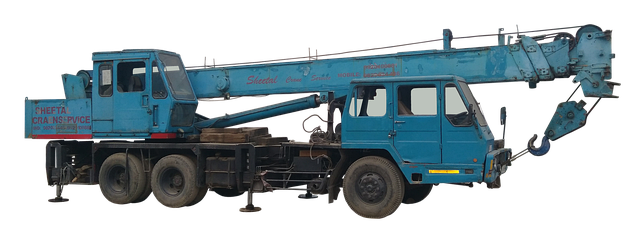Used Online Vehicles: Availability and Affordability in the USA
The digital transformation of vehicle sales has revolutionized how Americans purchase commercial vehicles, making the process more accessible and cost-effective than ever before. Online platforms now offer unprecedented access to trucks, vans, and specialized commercial equipment nationwide, connecting buyers with sellers across all 50 states while providing transparent pricing and detailed vehicle histories.

How Has Online Commercial Vehicle Shopping Changed?
The rise of online used vehicle platforms has fundamentally transformed commercial vehicle acquisition. Digital marketplaces like Commercial Truck Trader, TruckPaper, and Equipment Trader have become primary resources for fleet managers and independent contractors. These platforms aggregate inventory from dealerships, auctions, and private sellers, creating a comprehensive marketplace that was impossible to achieve through traditional brick-and-mortar operations.
The availability of used vehicles in the USA through online channels has expanded exponentially. Buyers can now access detailed specifications, maintenance records, and high-resolution images from their offices, significantly reducing the time investment required for vehicle procurement. Advanced search filters allow users to specify exact requirements including mileage, engine type, transmission, and specialized equipment configurations.
What Commercial Vehicle Types Are Available Online?
Online marketplaces showcase extensive commercial vehicle categories. Class 1-3 light commercial vehicles include pickup trucks, cargo vans, and small delivery vehicles popular among small business owners. Medium-duty trucks (Class 4-6) encompass box trucks, utility vehicles, and municipal equipment. Heavy-duty commercial vehicles (Class 7-8) feature semi-tractors, refuse trucks, and specialized construction equipment.
Specialized commercial equipment availability has grown substantially through digital channels. Refrigerated trucks, crane trucks, fire apparatus, and agricultural equipment now maintain dedicated online inventory sections. This specialized availability particularly benefits niche industries that previously relied on limited regional dealers or equipment brokers.
Why Choose Used Commercial Vehicles for Cost Savings?
Affordability and cost benefits represent primary motivations for purchasing used commercial vehicles online. New commercial trucks can cost $150,000 to $200,000, while comparable used units often range from $40,000 to $80,000 depending on age, mileage, and condition. This significant depreciation creates opportunities for businesses to acquire quality equipment at substantial savings.
Online platforms enhance cost transparency by displaying market pricing data and vehicle value estimates. Many sites integrate Kelly Blue Book commercial values or similar pricing guides, helping buyers identify fair market prices. Auction-style platforms provide additional savings opportunities, though they require more expertise to navigate successfully.
What Are Essential Tips for Buying Commercial Vehicles Online?
Tips for buying a used vehicle online require special attention to commercial-specific factors. Always request comprehensive maintenance records, as commercial vehicles typically operate under demanding conditions. Verify that all required commercial licensing, inspections, and certifications remain current and transferable.
Professional inspections become crucial for high-value commercial purchases. Many buyers arrange third-party mechanical inspections before finalizing transactions, especially for vehicles located in distant states. Documentation verification includes confirming clean titles, lien releases, and compliance with DOT regulations where applicable.
Transportation logistics require careful planning for commercial vehicle purchases. Unlike passenger cars, commercial vehicles may require special transport arrangements or commercial driver’s licenses for pickup. Factor these additional costs and requirements into your purchasing decision and timeline.
How Do Regional Markets Affect Commercial Vehicle Availability?
Commercial vehicle availability varies significantly across different regions of the United States. Southern and western states typically offer larger inventories due to milder climates and robust construction industries. Texas, California, and Florida consistently show high commercial vehicle turnover rates, creating opportunities for buyers nationwide.
Seasonal patterns influence both availability and pricing. Construction-related equipment shows increased availability during winter months in northern climates, while agricultural equipment availability peaks after harvest seasons. Understanding these regional and seasonal patterns can help buyers time their purchases for optimal selection and pricing.
What Do Commercial Vehicle Prices Look Like Across Major Platforms?
| Vehicle Type | Platform | Price Range | Key Features |
|---|---|---|---|
| Box Trucks (26ft) | Commercial Truck Trader | $35,000-$75,000 | Nationwide inventory, dealer network |
| Semi Tractors | TruckPaper | $45,000-$120,000 | Auction integration, financing options |
| Cargo Vans | AutoTrader Commercial | $25,000-$55,000 | Local dealer partnerships, warranties |
| Dump Trucks | Equipment Trader | $55,000-$150,000 | Specialized equipment focus, inspections |
Prices, rates, or cost estimates mentioned in this article are based on the latest available information but may change over time. Independent research is advised before making financial decisions.
The commercial vehicle market demonstrates significant price variations based on factors including vehicle age, mileage, condition, and regional demand. Financing options through online platforms have expanded, with many offering partnerships with commercial lenders who understand fleet acquisition needs. Lease buyout opportunities frequently appear on these platforms as companies upgrade their fleets, often representing excellent value propositions for individual buyers.
The online commercial vehicle marketplace continues evolving with enhanced digital tools, virtual reality showrooms, and improved financing integration. This digital transformation has democratized access to commercial vehicles, enabling businesses of all sizes to compete more effectively by accessing quality equipment at competitive prices through comprehensive online platforms.




